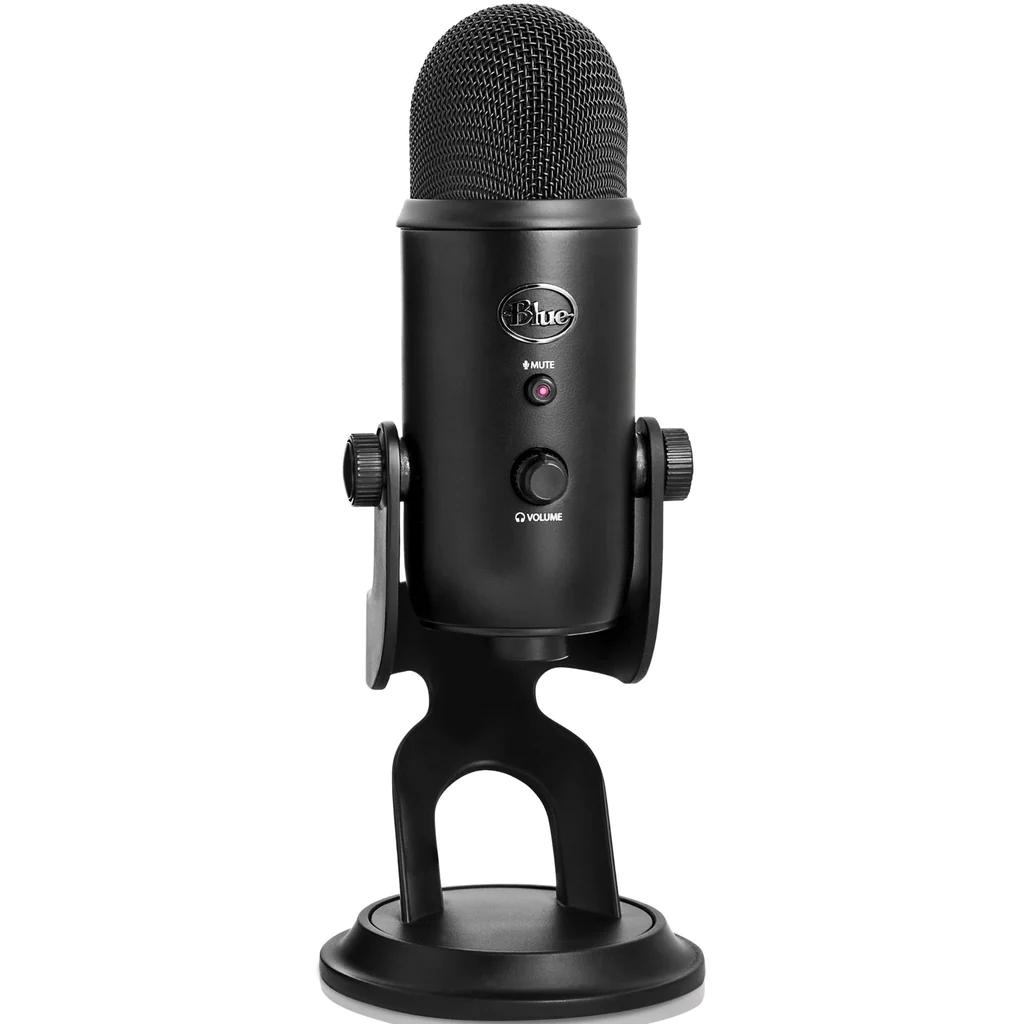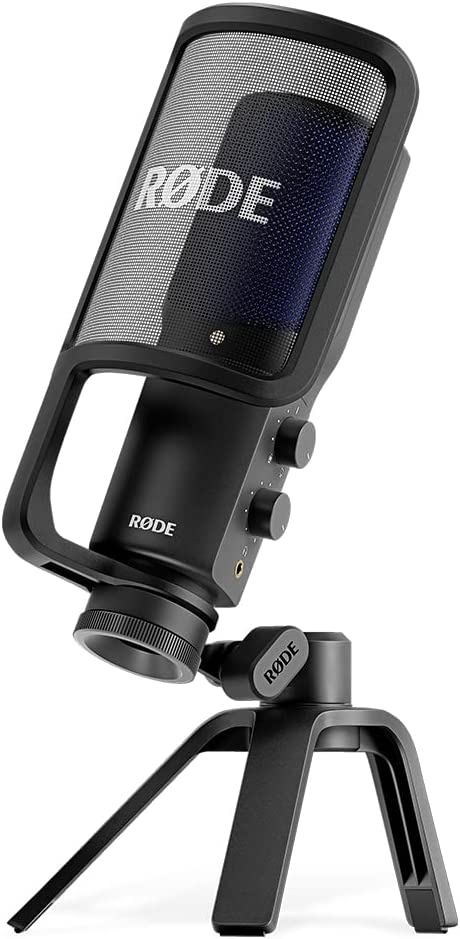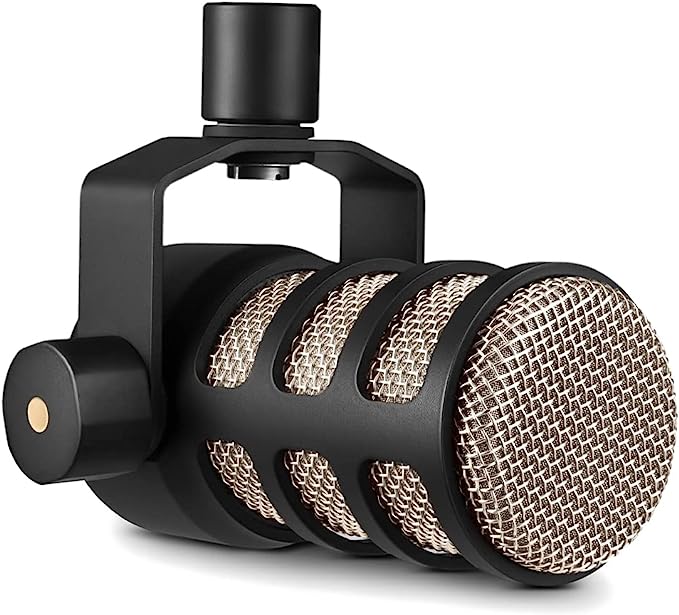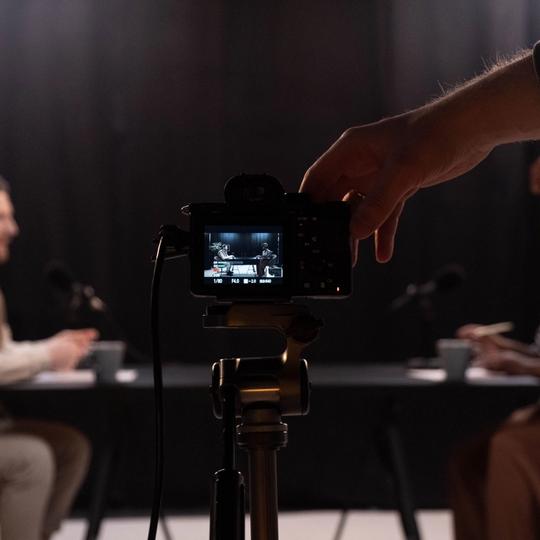
Tom Andrew
03-July-23
Get ready to find your perfect podcasting companion as we explore the best podcast microphones, helping you make the right choice for your unique voice and recording needs.
So, you're ready to take your podcasting journey to the next level? Well, hold on tight because we're about to dive into the world of podcast microphones. These unassuming devices play a crucial role in delivering crystal-clear audio and creating a professional podcasting experience. But with so many options out there, how do you choose the right one? Fear not, dear podcaster! We're here to guide you through the wonderful world of podcast microphones and help you find the perfect match for your needs.
Understanding the Role of Microphones in Podcasting
Before we jump into the nitty-gritty, let's take a moment to appreciate the importance of microphones in podcasting. They are the gatekeepers of audio quality, capturing your voice with precision and clarity. A top-notch microphone can make your words resonate like a melodic symphony, while a subpar one might leave your listeners cringing. So, it's essential to understand the different types of microphones and what they bring to the table.
Key Factors to Consider
When it comes to choosing a podcast microphone, several key factors should influence your decision. Let's explore them one by one:
- Microphone Type: There are two primary types to consider: USB and XLR microphones. USB mics offer simplicity and convenience, while XLR mics provide greater flexibility, advanced capabilities and professional-grade audio. We'll delve deeper into this in the next section.
- Recording Environment: Consider the environment in which you'll be recording. Is it a controlled studio setup or a more dynamic on-the-go situation? This will affect the microphone's sensitivity to background noise and the need for additional accessories.
- Budget: Determine your budget range early on, as it will help narrow down your options. Fear not, there are excellent microphones available at various price points, ensuring you can find one that suits both your needs and wallet.
- Audio Quality and Frequency Response: Look for a microphone that delivers a balanced and natural sound reproduction. The frequency response range is crucial, as it determines the microphone's ability to capture different tones accurately.
Types of Microphones
Now, let's dive into the two primary types of podcast microphones and discuss how to choose the one that best suits your needs:
USB Microphones
If you're seeking simplicity and convenience, USB microphones are the way to go. They are plug-and-play devices that connect directly to your computer via USB. USB microphones are perfect for all types of podcasters, and just because they're simple to use, doesn't mean you have to compromise on quality. Here's how to pick the right USB microphone for you:
- Consider Your Recording Space: USB microphones are ideal for home studios or environments where you have control over ambient noise. They offer excellent sound quality without requiring additional audio interfaces or mixers.
- Evaluate Your Budget: USB microphones come in a wide range of prices, so consider your budget and look for options that offer the best balance between affordability and performance.
Now, without further ado, here are our top picks for the best USB podcast microphones:
Blue Yeti (Amazon from $99)

A versatile USB microphone that delivers exceptional audio quality. The Blue Yeit has become a fan-favorite among podcasters for its versatility and impressive performance. Whether you're just starting out or a seasoned pro, the Blue Yeti has got you covered.
Pros
- Multiple pickup patterns: With four selectable polar patterns (cardioid, omnidirectional, bidirectional, and stereo), the Blue Yeti offers flexibility to adapt to different recording scenarios.
- Plug-and-play convenience: The USB connectivity of the Yeti makes it a breeze to set up. Simply plug it into your computer, and you're good to go.
- Built-in headphone jack: Monitor your recordings in real-time with the built-in headphone jack, ensuring you capture audio with precision.
- Sleek design and color options: The Yeti not only sounds great but also looks great on your podcasting setup. Choose from various color options to match your style.
Cons
- Sensitive to background noise: While the Yeti delivers excellent audio quality, it can be more prone to picking up background noise compared to other microphones. Be mindful of your recording environment.
- Large form factor: The Yeti's size may be a consideration if you have limited desk space or need a microphone that is easily portable.
Rode NT-USB+ USB Condenser Microphone (Amazon from $149)

Ready to bring studio-quality sound to your podcasting adventures? Look no further than the Rode NT-USB+ USB Condenser Microphone. This sleek and sophisticated microphone is designed to deliver exceptional audio performance, ensuring your voice shines through with pristine clarity.
An excellent choice for podcasters who prioritize audio quality and seek a professional-grade solution.
Pros
- Superior sound quality: The Rode NT-USB+ captures your voice with remarkable detail and accuracy, thanks to its high-quality condenser capsule and excellent frequency response.
- Versatile features: This microphone offers a range of handy features, including a built-in pop filter to minimize plosives, a headphone jack for real-time monitoring, and direct mix control for blending microphone and playback audio.
- Easy to set up and use: With its plug-and-play functionality, the NT-USB+ requires no additional drivers or software installation. Simply connect it to your computer, and you're ready to start recording.
- Solid build and aesthetic appeal: Crafted with durability in mind, the NT-USB+ features a robust all-metal construction. Its stylish design adds a touch of professionalism to your podcasting setup.
Cons
- Price: Compared to other USB microphones, the NT-USB+ is on the higher end of the price spectrum. However, its premium sound quality and features justify the investment for those seeking top-notch audio performance.
- Limited polar patterns: Unlike some higher-end XLR microphones, the NT-USB+ offers only a cardioid pickup pattern, which means it primarily captures sound from the front. This may limit its suitability for certain recording scenarios that require more directional versatility.
XLR Microphones
For those aiming for professional-grade audio and flexibility, XLR microphones are the go-to choice. They require an audio interface or mixer to connect to your recording setup. This will mean you need to invest a little more time and money into learning how to set the audio interface out. Here's how to find the perfect XLR microphone:
- Assess Your Recording Needs: XLR microphones are suitable for both controlled studio environments and on-the-go recording situations. Consider the versatility and portability you require.
- Invest in Additional Equipment: Along with the microphone, you'll need an audio interface or mixer to connect to your computer. Take this into account when considering your budget.
Now, let's uncover our top picks for the best XLR podcast microphones:
Rode PodMic (Amazon from $99)

The Rode PodMic will deliver professional-quality audio that will leave your listeners in awe. With its sleek design and exceptional performance, this microphone is a force to be reckoned with.
Pros
- Impeccable sound quality: The Rode PodMic captures your voice with remarkable clarity, ensuring every word resonates with your audience.
- Robust build: Built like a tank, this microphone can withstand the rigors of podcasting and is sure to last you a long time.
- Minimal background noise: Thanks to its excellent off-axis rejection, the PodMic keeps the focus on your voice, minimizing unwanted background noise.
- Affordable price: You don't have to break the bank to get your hands on this gem. The PodMic offers impressive value for its price.
Cons
- Requires an audio interface: As an XLR microphone, the PodMic requires an audio interface or mixer to connect to your recording setup, adding an extra cost if you don't already have one.
- Not as versatile for on-the-go recording: The PodMic's solid build and XLR connection make it more suitable for controlled studio environments than for portable recording setups.
Heil PR 40 ($349 on Amazon)

Enter the Heil PR 40 - a dynamic microphone that has earned a stellar reputation among podcasters and broadcasters alike. With its impeccable audio reproduction and rugged build, this microphone is ready to take your podcast to new heights. The Heil PR40 comes in at a higher price point and is for established podcasters looking for that premium, broadcast-quality sound.
Pros
- Superb sound quality: The Heil PR 40 captures your voice with astonishing clarity and warmth, ensuring a rich and professional audio experience for your listeners.
- Excellent off-axis rejection: With its cardioid polar pattern, the PR 40 focuses on capturing sound from the front while minimizing background noise and unwanted room reflections.
- Robust construction: Built to withstand the demands of professional use, the PR 40 features a solid metal body and durable components, ensuring it can handle the rigors of regular podcasting.
- Versatility across various applications: Beyond podcasting, the PR 40 excels in broadcast, voice-over, and studio recording scenarios, making it a versatile tool for content creators.
Cons
- Higher price point: The Heil PR 40 falls into the higher price range for microphones. However, its exceptional sound quality and durability make it a worthy investment for those seeking top-tier audio performance.
- Requires additional equipment: As an XLR microphone, the PR 40 requires an audio interface or mixer to connect to your recording setup. This adds an extra cost if you don't already own one.
- Larger and heavier form factor: The PR 40 is a substantial microphone, which may require a sturdy microphone stand or boom arm to support its weight. Its size may also be a consideration if you have limited space in your recording environment.
Go forth
In the vast ocean of podcast microphones, finding the perfect match for your needs may seem daunting. However, armed with the right knowledge and considerations, you'll navigate these waters with ease. Remember to assess the microphone type, consider your recording environment, and factor in your budget. Whether you opt for a USB microphone for simplicity or an XLR microphone for professional-grade audio, the key is to find a microphone that elevates your podcasting experience and keeps your listeners coming back for more. So, go forth and let your voice be heard, loud and clear!
Remember, burnout is real, but with efficient production, goal-setting, and a focus on your audience, you'll be well on your way to podcasting success.



